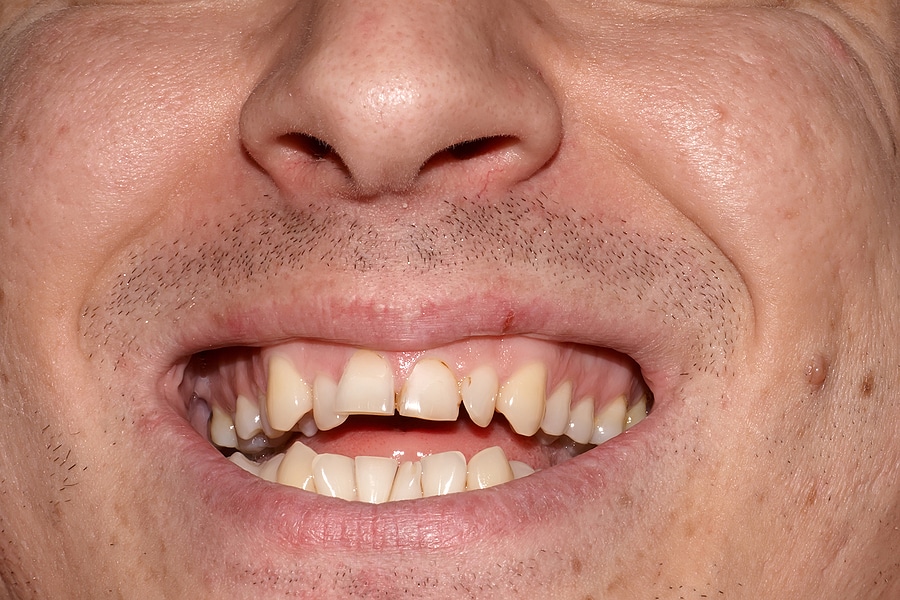Overlapping teeth, also known as dental crowding, occur when there isn’t enough space in the mouth for all of your teeth to fit properly. This dental issue can cause discomfort, impact your ability to clean your teeth effectively, and even affect your self-esteem. If you’re dealing with overlapping teeth, it’s important to understand the causes, symptoms, and available treatments to determine the best solution for your needs. In this article, we’ll explore the different ways to fix Overlapping Teeth and help you choose the right treatment.
Understanding the Causes of Overlapping Teeth:
Overlapping teeth can be caused by a variety of factors. These factors typically include genetics, poor dental habits, or other underlying dental conditions. Here’s a closer look at the common causes:
-
Genetics: Family history plays a significant role in dental crowding. If your parents had overlapping teeth, it’s more likely that you will too.
-
Jaw size: If your jaw is too small for your teeth, they may have to overlap in order to fit.
-
Early loss of baby teeth: Losing baby teeth prematurely can cause permanent teeth to shift and overlap.
-
Thumb-sucking: Prolonged thumb-sucking in childhood can impact the alignment of teeth.
Knowing the underlying cause of your dental crowding will help determine the most effective treatment for overlapping teeth.
Treatment Options for Overlapping Teeth:
There are several treatment options available to correct overlapping teeth. Each method varies in terms of time, cost, and effectiveness. The most common treatments include:
-
Braces: Traditional metal braces are a highly effective solution for overlapping teeth. Braces use brackets and wires to gradually move teeth into their correct positions over time.
-
Invisalign: If you prefer a more discreet option, Invisalign aligners can help straighten teeth without the visibility of traditional braces.
-
Retainers: After braces, a retainer may be needed to maintain the alignment of teeth.
-
Veneers: For minor overlaps, porcelain veneers can provide a cosmetic solution, covering imperfections and giving the appearance of straighter teeth.
Consulting with a dentist or orthodontist is essential to determine which option is best suited for your situation.
How Long Does It Take to Fix Overlapping Teeth?
The time it takes to fix overlapping teeth can vary greatly depending on the treatment chosen. On average:
-
Braces: Treatment with braces typically takes 1 to 3 years to fully align your teeth.
-
Invisalign: Invisalign treatment usually takes between 6 to 18 months, depending on the complexity of the case.
-
Veneers: Veneers can be applied in just a couple of visits, providing a quick cosmetic solution without long-term treatment.
While braces and Invisalign require time for gradual realignment, cosmetic options like veneers offer immediate results.
Benefits of Correcting Overlapping Teeth:
Choosing to treat overlapping teeth can improve both your oral health and overall quality of life. Here are a few key benefits:
-
Improved oral hygiene: When your teeth are properly aligned, it’s easier to brush and floss, reducing the risk of cavities and gum disease.
-
Better bite: Overlapping teeth can cause bite issues, such as overbites or underbites. Correcting these issues can help improve your bite and reduce jaw pain.
-
Boosted self-esteem: A straighter smile can help you feel more confident in social and professional situations.
-
Improved speech and chewing: Properly aligned teeth allow for better articulation and more efficient chewing, leading to better overall functionality.
Choosing the Right Treatment for Your Needs:
When deciding on the best solution for your overlapping teeth, several factors must be taken into account. These include:
-
Severity of crowding: More severe cases of dental crowding may require braces or Invisalign, while minor overlaps can be addressed with veneers.
-
Cosmetic preference: If you’re concerned about the appearance of braces, Invisalign may be a better option for you.
-
Budget: Braces and Invisalign are generally more expensive than cosmetic treatments like veneers, so it’s important to factor in cost when choosing a treatment.
-
Time commitment: If you need a quick fix, veneers might be the best option, but if you can commit to a longer treatment plan, braces or Invisalign will provide long-term results.
An orthodontist or dentist can help you weigh the pros and cons of each treatment option to determine the most suitable choice for your lifestyle and dental needs.
Maintaining Your Smile After Treatment:
After successfully treating Overlapping Teeth Treatment, it’s essential to maintain your new smile through proper oral care and follow-up treatments. Here’s how you can keep your teeth in great condition:
-
Follow-up visits: Regular checkups with your dentist or orthodontist are crucial to ensure your teeth remain in alignment.
-
Wear retainers: If you’ve had braces or Invisalign, wearing a retainer as prescribed will help prevent teeth from shifting back.
-
Good oral hygiene: Brushing twice a day and flossing daily is essential to prevent plaque buildup and maintain healthy teeth.
By following these tips and committing to your dental care routine, you can enjoy a beautiful, straight smile for years to come.
Correcting overlapping teeth is an achievable goal, and the right treatment can dramatically improve both your appearance and your oral health. Whether you choose traditional braces, Invisalign, or a cosmetic solution like veneers, the important thing is to choose the treatment that fits your needs and lifestyle. Consult with a dental professional to get personalized recommendations and start your journey toward a more confident, healthy smile.

